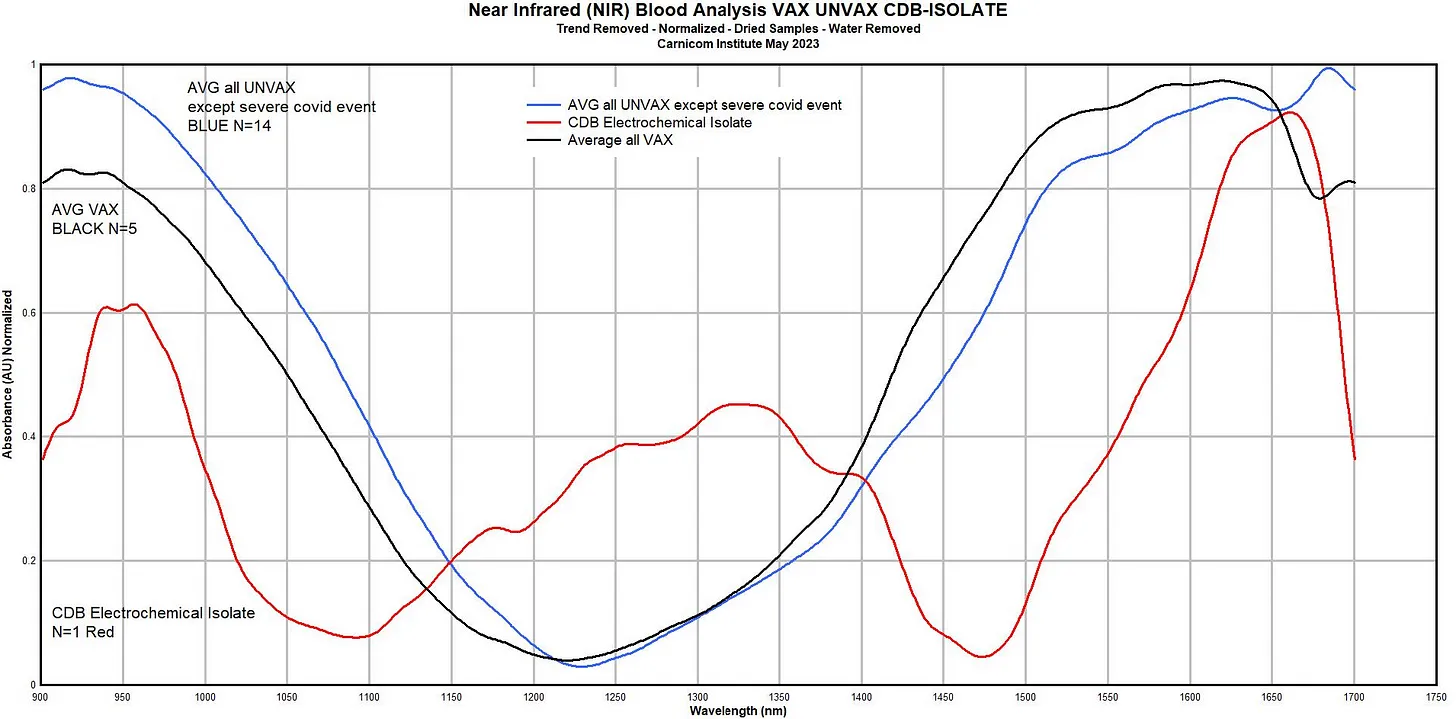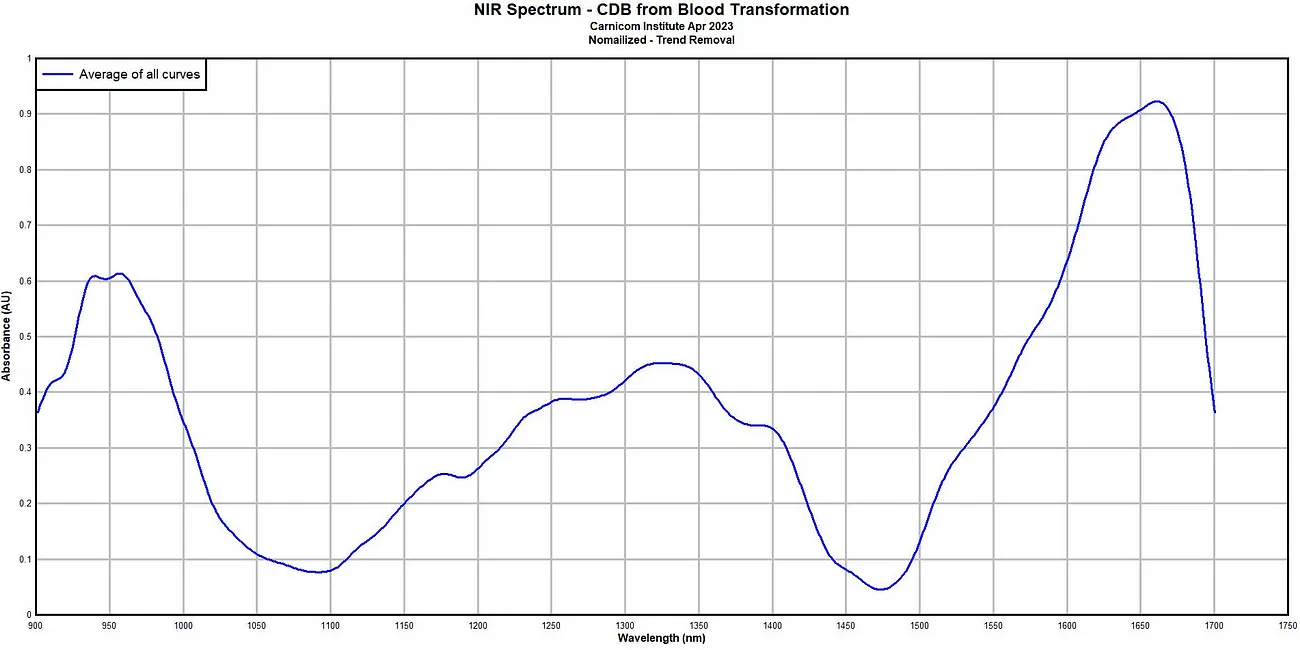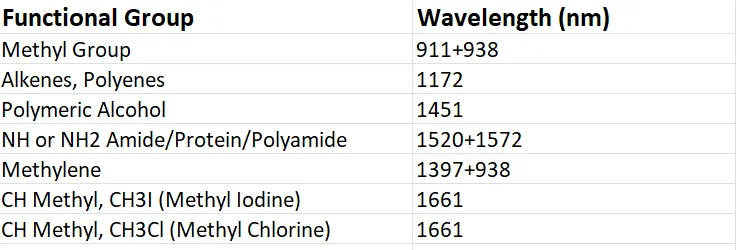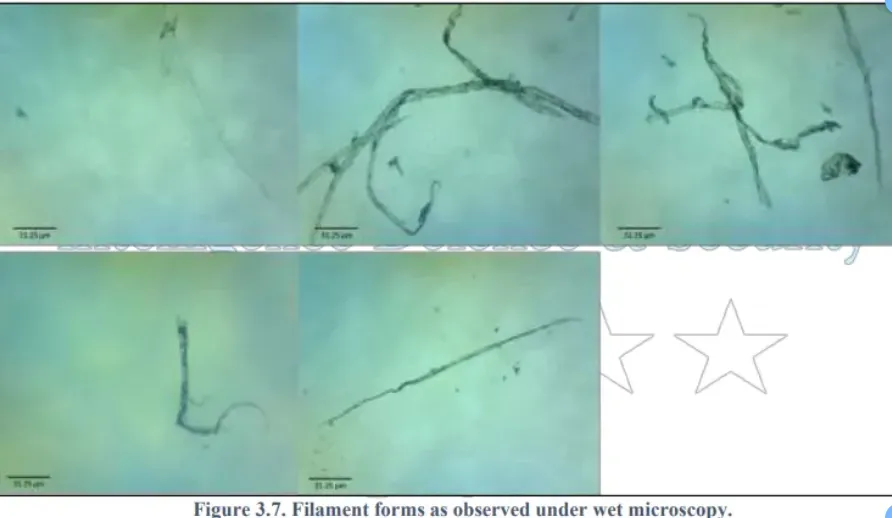
Image: Cumulative NIR spectra Red: CDB Electrochemical Isolate Fingerprint. Black: Average NIR C19 Vaccinated Blood. Blue: C19 Unvaccinated Blood
In this report, we continue to describe our research findings. Several important sequential scientific steps have fallen into place. In previous articles we have described the means of transforming blood via exposure to electrical current. That transformation results in the ability to rapidly and efficiently isolate the synthetic organism CDB, which we showed is the origin of the filaments seen in the blood of humanity.
In our most recent groundbreaking paper we answered the question – what is chemically in the CDB layer.

Image: Near Infrared Spectrum Analysis of the lower layer of CDB isolate from C19 unvaccinated blood. Executive Summary: In this paper we present the Near Infrared Chemical Analysis Fingerprint of the Cross Domain Bacteria (CDB) lower layer isolate from unvaccinated blood from which the filament structures grow. We have shown in previous studies that th…
We continue to draw the connections to the historical framework provided by Clifford’s twenty five year research – which showed that the synthetic organism CBD, formerly called Morgellons, caused similar symptoms and blood manifestations as we see now in the post C19 era. In the Covid era in addition to the 25 year history of geoengineering/ bioengineering we have seen the compounded effects of alterations of the physical nature of the planet, all biology and humanity. The question is this: Is there any similarity in chemical functional groups as we know to exist in CDB and in current blood samples? In other words, can we find the NIR spectral fingerprint of CDB in the blood?
To answer this question we look at the data of the CBD NIR chemical and biological spectrum and the two groups of human blood samples, which contain 5 C19 vaccinated and 14 C19 unvaccinated people.
For those unfamiliar with NIR Spectroscopy, it is important to note that the magnitude of the graph is often less important than the shape of the graph. Variations in shape of the graph mean response to energy, which is most important here. While the graphs look very different visually, when studying them in detailed analysis we found 1:1 correlations. People might ask what is the reference to normal blood. We do not have proper reference, since both vaccinated and unvaccinated blood are abnormal at this time – however we are able to compare them against each other.

Alkenes and Polyenes:
Alkenes can act as monomers in a polymerization reaction. Polyenes refer to the presence of several alkenes. They are used to make polymer plastics and hydrogels. The simplest alkenes are ethylene, propylene, and butene. Ethylene glycol is an alkene. Polyethylene Glycol is a component of the Pfizer C19 Lipid Nanoparticles. Polyene antimycotics, sometimes referred to as polyene antibiotics, are a class of antimicrobial polyene compounds that target fungi. Polyenes can bind to many protein membranes and other proteins specifically by binding to SH groups.
Butanal is an alkene. Butanal was a component of the environmental filaments analysis we reported here:

Image: Moderna C19 shot filament growth Project CUNIT-2-112Y6580 Introduction: I have been discussing that the filaments seen in live blood, C19 shot contents and the environmental poisoning via geoengineering can come from different sources – however there are some remarkable similarities present that are worthy of further study. In my view, this assau…
Polymeric Alcohols:
Polymeric Alcohols like Polyvinyl Alcohols make plastics and hydrogels.
NH Amides and Polyamides:
Polyamides are polymers that contain repeating amide. Proteins are examples of naturally occurring polyamides. Polyamides are prominent polymers that combine the stiffness and excellent thermal and mechanical properties of polyamides with the biocompatibility and biodegradability of polyesters. They are used for medical applications in drug delivery systems, hydrogels, non-viral gene carriers, smart materials, composites, adhesives, and especially as scaffolds for tissue engineering.
Polymers are essential building blocks of SYNTHETIC BIOLOGY and TRANSHUMANISM.
Synthetic biology accounts for heterogeneous approaches towards minimal and even artificial life, the engineering of biochemical pathways on the organismic level, the modelling of molecular processes and finally, the combination of synthetic with nature-derived materials and architectural concepts, such as a cellular membrane. Still, synthetic biology is a discipline, which embraces interdisciplinary attempts in order to have a profound, scientific base to enable the re-design of nature and to compose architectures and processes with man-made matter. We like to give an overview about the developments in the field of synthetic biology, regarding polymer-based analogs of cellular membranes and what questions can be answered by applying synthetic polymer science towards the smallest unit in life, namely a cell.
Synthetic biology, inspired by synthetic chemistry
Additionally polymers have been used to create artificial robots and Cyborgs:
Cyborg rose has electric circuits running through polymer veins
Magnus Berggren, a professor of organic electronics at Linköping University, led a team that built a working electronic circuit from an ordinary garden rose by filling its veins with conductive polymer. Finally, they found one that worked. PEDOT, or poly(3,4-ethylenedioxythiophene), is a classical conducting polymer used in traditional electronics. The researchers soaked a garden rose, with its roots and leaves removed, in a solution of PEDOT. Over the course of a couple of days, the polymer was taken up by the plant’s network of xylem and then solidified inside it as a gel. When they peeled away the outer bark and tissue at the bottom of the stem, the researchers could see slender dark wires winding through the rose.
Methyl groups:
Methyl groups are extremely important to the body and vital for normal cell replication. They “turn on” or “turn off” genes. Stage II liver detoxification, protein methylation, homocysteine metabolism (increasing methyl groups reduces inflammation), neurotransmitter synthesis, and nucleic acid synthesis all need methyl groups. This poses the question if the CDB microbe is stealing methyl groups from the body, hence causing accelerated aging, DNA damage and disease.
Halogens ( Methyl Iodine, Methyl Bromine, Methyl Chlorine):
Exposure to halogens, such as chlorine or bromine, results in environmental and occupational hazard to the lung and other organs.
Summary:
We have shown 1:1 correlation between existence of functional chemical groups in CDB and in human blood. The spectral signature of functional groups indicating polymer hydrogels are repetitively identified. These functional groups can be found in C19 injection lipid nanoparticles and have been historically found in the environmental filament chemical analysis. NO SIGNIFICANT DIFFERENCE BETWEEN C19 VACCINATED AND UNVACCINATED BLOOD IS IDENTIFIED AT THIS TIME. This is in line with live blood analysis that currently shows filaments in both vaccinated and unvaccinated blood without any identifiable difference. We again call attention to the urgency of these results and express our concern about a potential human extinction level event.
If you would like to support our research Project “ What happened to Humanities Blood? “, please donate to Carnicom Institute. We are a team of scientists dedicated to saving the human species and our planet. Thank you.
